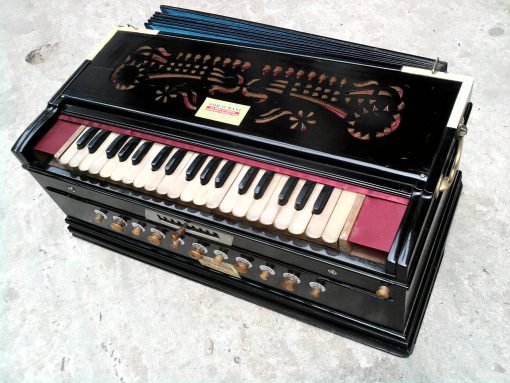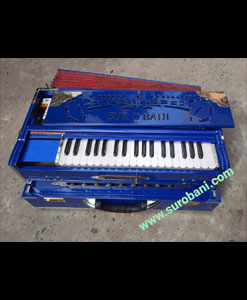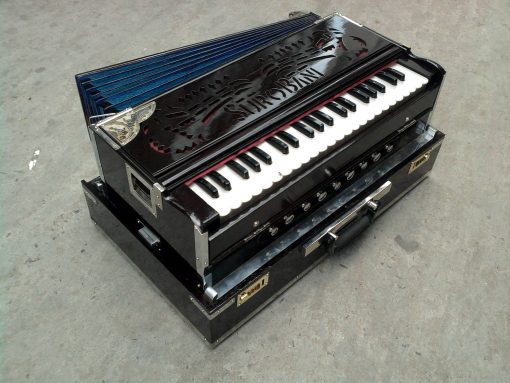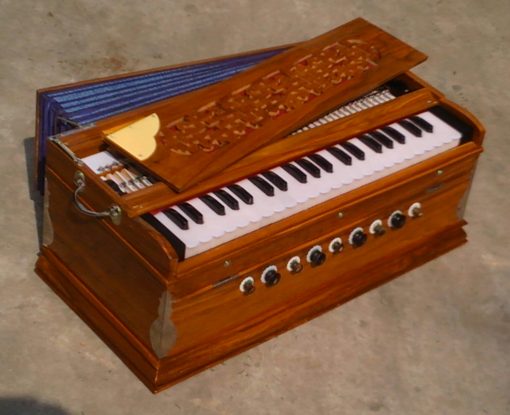The harmonium is a musical instrument that didn’t originate in India but has become trendy here because of its connection to Hindustani classical music. The harmonium also plays an important role in devotional and Sufi music traditions, like ghazals and qawwals. It is also a popular instrument for yoga and chanting. Insights from Gurminder Kaur Bhogal.
Our Company Surobani, has had experience with good reviews for many years, and today’s blog post is being shared based on that.
Characteristics of harmonium:
- A harmonium is a keyboard instrument similar to a piano, but it is much smaller and lighter. The harmonium consists of a set of free reeds that vibrate when played, activated by a wind supply from hand-operated compression bellows. It is typically made out of wood and can be either non-portable or portable.
- The Indian harmonium is not the same as the European organ; it has been modified to suit the requirements of Indian music. It consists of a small box, about two feet by one foot and nine to ten inches tall, that is built out of wood and has its back open to act as the bellows. Inside the box is a piano-like keyboard with about three octaves of keys, a set of free reeds whose length determines their pitch and a hand-operated compression bellows to supply them with wind.
- On the front of the harmonium are a series of larger knobs that are called stops and smaller knobs that are called drones. The larger knobs are used to open and close the air chambers that contain the reeds, enabling you to play a particular set of notes or all of them. The smaller knobs are used to adjust the amount of air that goes into each reed bank, which affects how much pressure you need to press on the key to produce a sound.
- Some harmoniums have a coupler, which allows you to connect two reed banks and play two octaves of the same note at the same time. It sounds a little weird but it’s useful for playing harmonies or chords, and you can make a harmonium that has fewer reed banks sound as if it had more by using the coupler.



- Most harmoniums come with a few different features, but most of them are fairly redundant. There are stops and scale changers, which are useful if you want to add an octave to a note on the keyboard or change your keys to a different key. But, if you don’t need any of these features, you should consider a basic harmonium that doesn’t have anything extra.
- In the late 19th and early 20th Century, waves of migrants from northern India brought the harmonium to communities in Great Britain and the United States. It became very popular here for ghazals, Urdu poetry set to music, and Kathak, the dance of northern India. It is also used for qawwalis, the devotional Sufi music tradition and for Hindustani raga sangeet, a form of classical Indian music.
- Besides the standard harmonium, there are other types of Indian harmoniums made from different wood, with different construction methods and designs. Some have a detachable cover that can be used as a stand for the harmonium, while others fold into themselves like a suitcase. The portable models are easier to carry around but may be a bit heavier than the non-portable ones.
- The harmonium is now very common in the world of Indian music and continues to grow in popularity as a means to play Hindustani ragas and other Indian musical forms. Several famous Indian harmonium players have recorded albums including Begum Akhtar and Pandit Bhimsen Joshi. The instrument is also played by other Indian musicians specialising in classical Indian dances such as Bharatanatyam, which involves intricate hand movements. It is also commonly found in the music of communities that grew from the late-19th and early-20th century migrations of labourers from India to the Caribbean (Trinidad and Tobago), South America, and South Africa, as well as among Indians living in Great Britain and the United States.
To know more about Harmonium and other Indian Musical Instruments you can check out SUROBANI. And please feel free to contact us to order any Musical Instruments or Indian Dance Costumes.

